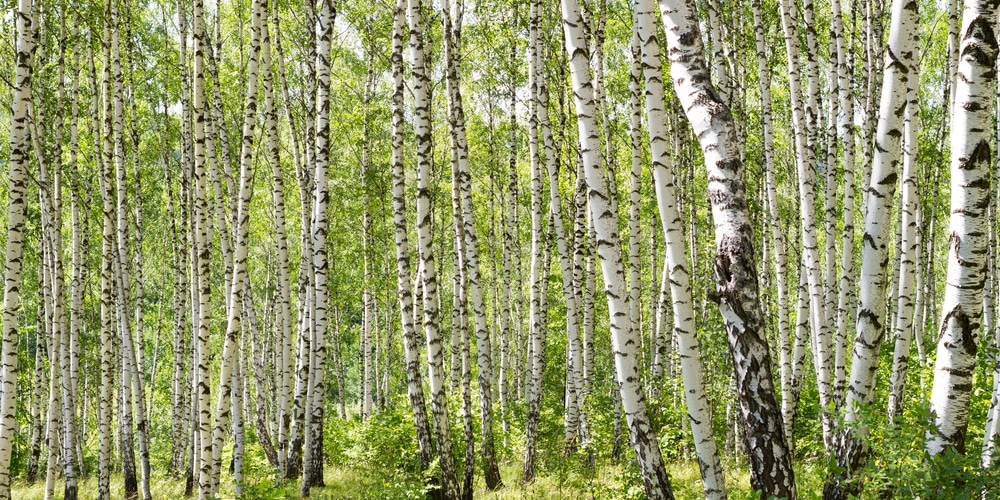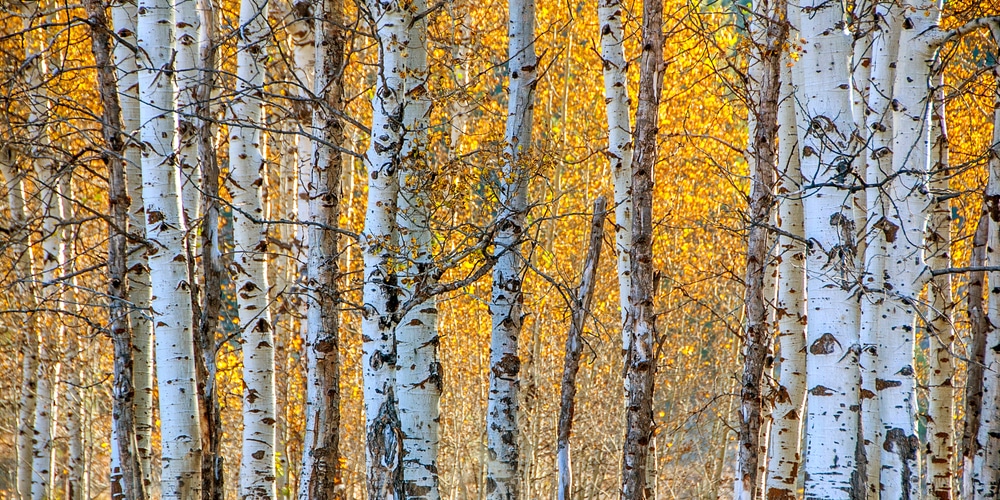When identifying birch versus aspen trees, some similarities and differences between the two can help you determine which tree you are looking at. Both birch and aspen trees have smooth, silver-colored bark. However, the bark on a birch tree is typically darker in color than the bark on an aspen tree.
Let’s compare birch versus aspen trees to help with identification.
What is a birch tree?
Birch comes from the botanical family Betulaceae which also contains many similar trees, such as hazels and alders. There are many varieties of birch trees which are found mainly in Canada and the northern part of the USA. Some common types of birch include paper birch, white birch, silver birch, and downy birch.
Birch trees are relatively fast to grow and establish themselves and are hardy and resistant to pests and diseases that affect other trees. They like to grow in well-drained soil that’s light and acidic.
What is an aspen tree?
Aspen trees are commonly found across Canada and mid-western and western areas of the States. These trees grow in clusters, reasonably close together, and several trees often share the same ‘parent’ root system.
Aspens are part of the Populus botanical family, producing catkins in the spring between March and April. Tiny seeds form on the flowers, which causes the tree to propagate. Aspen can also grow new trees from small suckers.
Birch Versus Aspen: Similarities
Birch trees and aspen trees are both deciduous trees commonly found across America and Canada. They are both characterized by having thin, papery bark, which is smooth and looks silvery from a distance.
These trees also have very similar foliage; the leaves are oval and have toothed edges. In the fall, both species produce lovely yellow foliage. They also both have catkins in the spring.
Differences between birch and aspen
There are some key differences between birch and aspen trees. Birch trees tend to be taller and are 50 to 70 feet tall, with some species reaching up to 100 feet tall. They also have a longer lifespan than aspen trees, with some birch trees living for over 200 years.
Aspen trees, on the other hand, are shorter, with most species only reaching 20 to 40 feet in height. They also have a shorter lifespan, with most aspen trees only living for around 50 to 70 years.
The spread of the trees is also different, with birch trees spreading 25 to 50 feet compare to 10 to 30 feet for a aspen. Leaves are also a slightly different shape; the aspen trees foliage is slightly wider than the birch. Each leaf is attacked to a longer stalk, and the foliage blows in the wind. This is why aspens are often referred to as a quaking aspen.
There are also a lot more marking on the bark of a birch tree. Horizontal lines are, known as lenticels, criss-cross the bark. These are the sights of gas exchange for the tree. Aspen, on the other hand, has fewer markings and generally lighter bark. You will see some scarring on the trunk from old branches. Older aspen are often covered in lichen, which makes the tree trunk appear darker.
Birch trees also have a few other unique characteristics. Their leaves are usually dark green and light green underneath. The bark of a birch tree is smooth and often has a white or silver color. Aspen trees, on the other hand, have leaves that are green on both sides and bark that is rougher and often has a gray or brown color.
Conclusion
The main similarities between birch and aspen trees are that they are both deciduous trees with white bark. However, there are also differences in the height and lifespan of the trees as well as the color of the leaves and bark.


